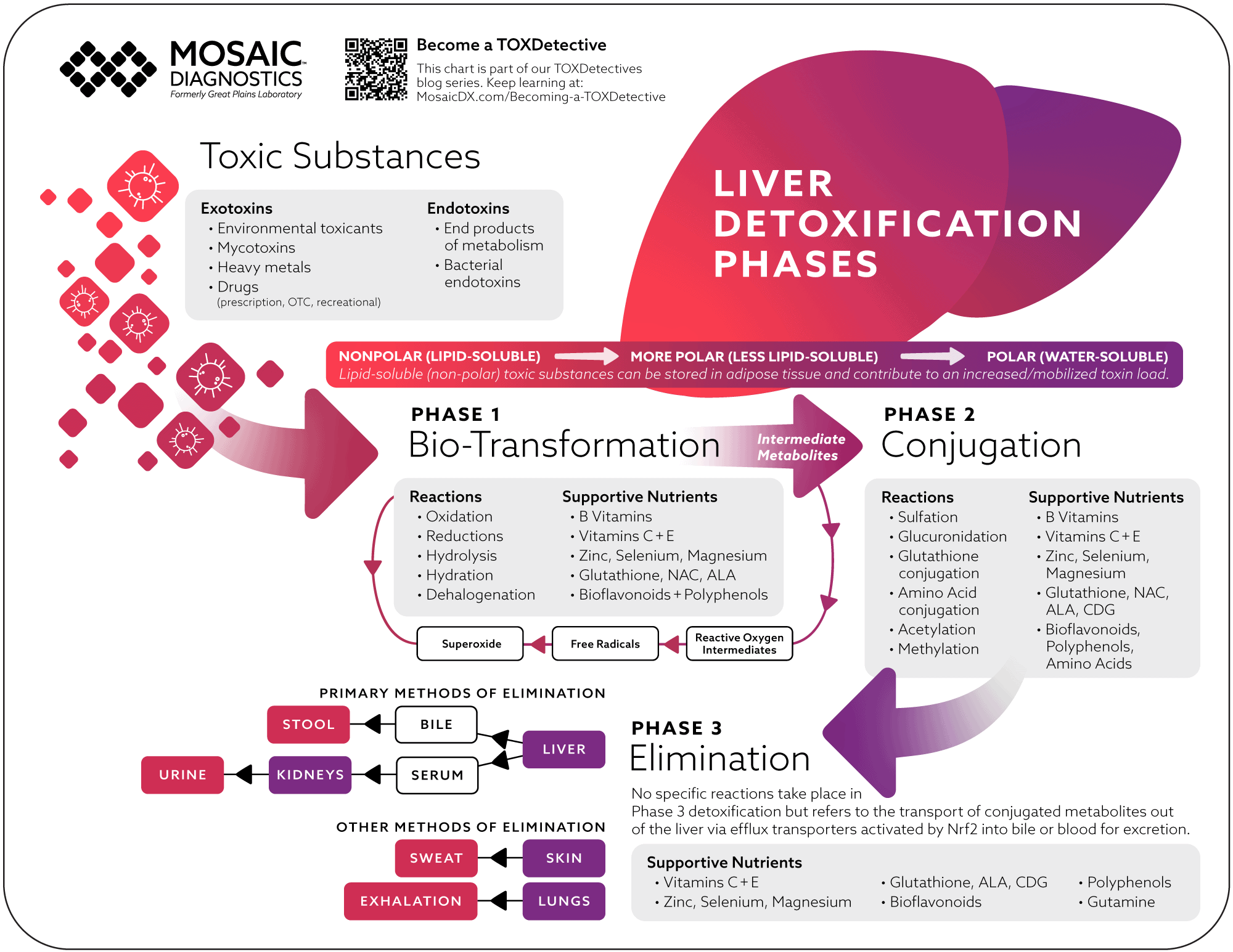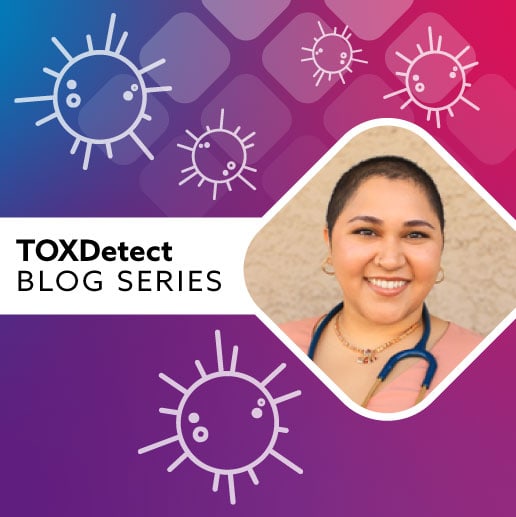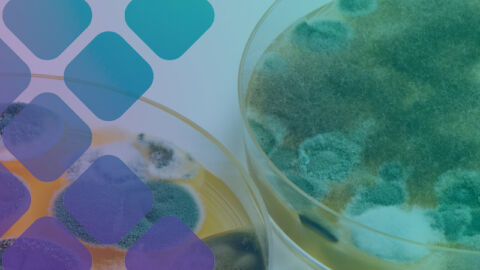The liver is a vital organ responsible for numerous essential functions, including the detoxification of substances such as the body’s own cellular debris, medications, environmental toxicants, and mycotoxins to name a few. These substances undergo a series of well-coordinated processes that transform lipophilic substances into more hydrophilic forms, facilitating their elimination from the body.
Environmental toxicants, detected on Mosaic Diagnostic’s TOXDetect Profile®, and mycotoxins, found on the MycoTOX Profile™, vary in their lipophilicity and are processed through these intrinsic detoxification mechanisms. These processes can be broadly categorized into three phases: Phase I, Phase II, and Phase III detoxification, which we will cover in this comprehensive blog.
Understanding the phases of liver detoxification is crucial for augmenting the body’s ability to detoxify effectively, promoting optimal liver function and overall health.
Key Points:
- Phase I liver detoxification involves modification of toxic substances through oxidation, reduction, hydrolysis, hydration, and dehalogenation reactions, primarily facilitated by cytochrome p450 enzymes, transforming them into more reactive intermediates.
- Phase II conjugation further processes these intermediates by binding them to endogenous molecules such as glutathione, sulfate, or amino acids, making them more water-soluble and less harmful.
- Phase III detoxification involves the transport and elimination of these conjugated toxins out of hepatocytes, primarily into the bile or urine for excretion, ensuring their removal from the body.

Keep learning about liver detoxification with our complementary “Phases of Liver Detoxification” chart.
The Phases of Liver Detoxification
Phase I Liver Detoxification: Biotransformation
Phase I detoxification is the primary step in the detoxification process and involves the modification of various substances through oxidation, reduction, hydrolysis, hydration, and dehalogenation reactions. These reactions are primarily mediated by the cytochrome P450 enzyme family.1 The goal of phase I is to biotransform lipophilic (fat-soluble) compounds into more hydrophilic (water-soluble) metabolites for enhanced excretion. The main reactions in phase I are:
Oxidation
This is the most common type of phase I reaction and is characterized by cytochrome P450 enzymes introducing an oxygen atom into the substrate, forming a hydroxyl group. Oxidation may also involve other subtypes such as hydroxylation (the addition of a hydroxyl group), dealkylation (removal of an alkyl group), deamination (removal of an amine group), and sulfoxidation (the oxidation of sulfur-containing compounds).2
Reduction
Reduction involves the addition of electrons to the substrate. Examples of various reduction reactions include nitro reduction (the conversion of nitro groups to amines) and azo reduction (the conversion of azo groups into hydrazines).
Hydrolysis
Hydrolysis reactions involve the cleavage of ester and amine bonds and splitting the compound to add an OH group to one part and hydrogen bound to the other, therefore adding water.
Hydration
Hydration reactions are not as common as the above three. This reaction involves the addition of a water molecule to a compound, often resulting in the formation of an alcohol from an alkene or the conversion of epoxides to diols.
Dehalogenation
Dehalogenation, sometimes referred to as a type of reduction reaction, involves the removal of halogen elements such as fluorine, chlorine, bromine, and iodine from organic molecules.
After these biotransformation reactions take place, some substances are now more hydrophilic and ready to be excreted while others will move on to phase II detoxification, where they undergo conjugation reactions to further increase their solubility and facilitate excretion.3 It is important to note that the conversion of substances from a more lipophilic state to a more hydrophilic state often results in the production of reactive intermediates, which can be more toxic than the original substance.4 We will explore this in more detail in later sections.
Phase II Liver Detoxification: Conjugation
Phase II detoxification involves the conjugation of reactive intermediates produced in phase I with endogenous molecules, rendering them more water-soluble and facilitating their excretion. The six primary reactions that take place in phase II include:
Glucuronidation
Glucuronidation is a reaction catalyzed by UDP-glucuronosyltransferases (UGTs), which are responsible for conjugating or fusing glucuronic acid to substrates, making them easier to excrete.5 UGT1A1 is a major enzyme involved in this process.6
Sulfation
Sulfation involves sulfotransferases (SULFTs). As described in its name, SULFTs catalyze the transfer of a sulfonate to hydroxyl or amine groups of a substrate, enhancing their water solubility and facilitating excretion.7 8
Glutathione
In this reaction, glutathione S-transferases (GSTs) mediate the conjugation of glutathione (GSH) to electrophilic centers on substrates. This reaction not only increases the solubility but also detoxifies reactive intermediates and prevents cellular damage as GSH is a key antioxidant in the body.9
Acetylation
Acetylation conjugation involves the transfer of an acetyl group (CH3CO) from acetyl-CoA to aromatic amines or hydrazines. Acetylation is catalyzed by enzymes called N-acetyltransferases.10
Amino Acid
The next conjugation reaction is amino acid conjugation. This reaction involves the conjugation of toxic metabolites with amino acids such as aspartate and glutamate being the most common along with glycine, taurine, glutamine, arginine, and ornithine. The binding of amino acids increases the solubility of these metabolites. Amino acid conjugation is catalyzed by enzymes specific to each amino acid.
Methylation
The last of the main reactions in phase II detoxification is methylation. Methyltransferases transfer a methyl group (CH3) from S-adenosylmethionine (SAMe) to a toxic substance or drug molecule, therefore neutralizing reactive groups, regulating metabolic pathways, and enhancing stability and excretion of toxic metabolites. The most common methyltransferase enzyme is COMT and has been highly studied for its role in neurotransmitter and estrogen metabolism.11
The combination of these conjugation reactions increases the molecular weight and makes the conjugated compound have a negative charge. In turn, this reduces their membrane permeability, necessitating carrier-mediated transport for biliary and renal excretion.12
Phase III Liver Detoxification: Elimination
Once substances are sent through the liver to be biotransformed in phase I and conjugated in phase II, they must be eliminated. This is where phase III comes into play. Phase III liver detoxification refers to the transport of the conjugated metabolites out of the hepatocytes in the liver via efflux transporters into bile or blood to be excreted via stool or urine, respectively.
These efflux pumps are primarily mediated by ATP-binding cassette (ABC) transporters. They include multidrug resistance-associated proteins (MRPs), such as MRP-2 and MRP-3, which are heavily involved in the elimination of phase II conjugated metabolites and are induced by the activation of nuclear factor erythroid 2-related factor 2 (Nrf2).13,14 This process is critical for maintaining cellular homeostasis and preventing the accumulation of potentially toxic substances within hepatocytes.15
Once these conjugated metabolites have been released from the hepatocytes, they may be sent to the kidneys, to be removed via urine, or bound to bile, made from the liver, and eliminated via stool. The route in which they go is highly dependent on numerous factors including the chemical composition of the metabolite.16 It is important to note here that reabsorption can occur in either pathway, so supporting elimination through optimal hydration and regular bowel movements is crucial.16
All three of these phases are necessary and work together to protect our body. By supporting liver detoxification as a whole, we can enhance the synergistic activity of liver detoxification.
Summary
Liver detoxification is a multi-phase process essential for the elimination of harmful substances from the body. Phase I is facilitated by cytochrome P450 enzymes that modulate various biotransformation reactions, making lipophilic toxic substances more hydrophilic. In phase II, we see the complex interplay of conjugation reactions that involves the binding of reactive intermediates to endogenous molecules. Finally, phase III elimination involves the removal of conjugated toxins via bile or blood with the activation of the Nrf2 pathway to eventually be removed through stool or urine, respectively. In our next blog, we will provide a breakdown of the various nutrients and plant derivatives that have been found to enhance specific reaction in each phase, while also displaying hepatoprotective benefits.
A comprehensive understanding of these phases and their nutritional requirements is crucial for maintaining optimal liver function and overall health.

References
- Grant DM. Detoxification pathways in the liver. J Inherit Metab Dis. 1991;14(4):421-430. doi:10.1007/BF01797915
- Sevior DK, Pelkonen O, Ahokas JT. Hepatocytes: the powerhouse of biotransformation. Int J Biochem Cell Biol. 2012;44(2):257-261. doi:10.1016/j.biocel.2011.11.011
- Sevior DK, Pelkonen O, Ahokas JT. Hepatocytes: The Powerhouse of Biotransformation. The International Journal of Biochemistry & Cell Biology. 2012;44(2):257-61. doi:10.1016/j.biocel.2011.11.011
- Elias E, Mills CO. Coordinated defence and the liver. Clin Med (Lond). 2007;7(2):180-184. doi:10.7861/clinmedicine.7-2-180
- Zamek-Gliszczynski MJ, Hoffmaster KA, Nezasa K, Tallman MN, Brouwer KL. Integration of hepatic drug transporters and phase II metabolizing enzymes: mechanisms of hepatic excretion of sulfate, glucuronide, and glutathione metabolites. Eur J Pharm Sci. 2006;27(5):447-486. doi:10.1016/j.ejps.2005.12.007
- Kohalmy K, Vrzal R. Regulation of phase II biotransformation enzymes by steroid hormones. Curr Drug Metab. 2011;12(2):104-123. doi:10.2174/138920011795016872
- Zamek-Gliszczynski MJ, Hoffmaster KA, Nezasa K, Tallman MN, Brouwer KL. Integration of hepatic drug transporters and phase II metabolizing enzymes: mechanisms of hepatic excretion of sulfate, glucuronide, and glutathione metabolites. Eur J Pharm Sci. 2006;27(5):447-486. doi:10.1016/j.ejps.2005.12.007
- Kohalmy K, Vrzal R. Regulation of phase II biotransformation enzymes by steroid hormones. Curr Drug Metab. 2011;12(2):104-123. doi:10.2174/138920011795016872
- Dasari S, Ganjayi MS, Yellanurkonda P, Basha S, Meriga B. Role of glutathione S-transferases in detoxification of a polycyclic aromatic hydrocarbon, methylcholanthrene. Chem Biol Interact. 2018;294:81-90. doi:10.1016/j.cbi.2018.08.023
- Zamek-Gliszczynski MJ, Hoffmaster KA, Nezasa K, Tallman MN, Brouwer KL. Integration of Hepatic Drug Transporters and Phase II Metabolizing Enzymes: Mechanisms of Hepatic Excretion of Sulfate, Glucuronide, and Glutathione Metabolites European Journal of Pharmaceutical Sciences : Official Journal of the European Federation for Pharmaceutical Sciences. 2006;27(5):447-86. doi:10.1016/j.ejps.2005.12.007.
- Kohalmy K, Vrzal R. Regulation of phase II biotransformation enzymes by steroid hormones. Curr Drug Metab. 2011;12(2):104-123. doi:10.2174/138920011795016872
- . Zamek-Gliszczynski MJ, Hoffmaster KA, Nezasa K, Tallman MN, Brouwer KL. Integration of Hepatic Drug Transporters and Phase II Metabolizing Enzymes: Mechanisms of Hepatic Excretion of Sulfate, Glucuronide, and Glutathione Metabolites. European Journal of Pharmaceutical Sciences : Official Journal of the European Federation for Pharmaceutical Sciences. 2006;27(5):447-86. doi:10.1016/j.ejps.2005.12.007.
- Cornejo P, Vargas R, Videla LA.. Nrf2-Regulated Phase-Ii Detoxification Enzymes and Phase-Iii Transporters Are Induced by Thyroid Hormone in Rat Liver. BioFactors (Oxford, England). 2013 Sep-Oct;39(5):514-21. doi:10.1002/biof.1094.
- Maher JM, Dieter MZ, Aleksunes LM, et al. Oxidative and electrophilic stress induces multidrug resistance-associated protein transporters via the nuclear factor-E2-related factor-2 transcriptional pathway. Hepatology. 2007;46(5):1597-1610. doi:10.1002/hep.21831
- Döring B, Petzinger E. Phase 0 and Phase III Transport in Various Organs: Combined Concept of Phases in Xenobiotic Transport and Metabolism. Drug Metabolism Reviews. 2014;46(3):261-82. doi:10.3109/03602532.2014.882353.
- Garza A et al. 2024. Drug Elimination. StatPearls. https://www.ncbi.nlm.nih.gov/books/NBK547662/









